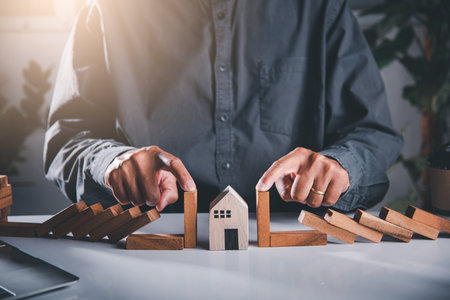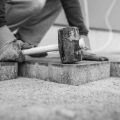1. Understanding the Value of Decluttering
When youre getting ready to sell your home, first impressions matter. One of the easiest and most cost-effective ways to boost your homes market value is by decluttering. A clean, organized space not only looks more appealing but also helps potential buyers imagine themselves living there. Clutter can distract buyers, make rooms feel smaller, and give the impression that the home hasnt been well maintained.
Why Decluttering Makes a Difference
Homebuyers often make decisions based on emotion. A neat and tidy home creates a sense of calm and order, which can translate into a higher perceived value. On the other hand, cluttered spaces can overwhelm buyers and obscure your homes best features. By removing excess items, you highlight the functionality and spaciousness of each room.
Key Benefits of Decluttering Before Selling
| Benefit | Description |
|---|---|
| Increases Perceived Space | Clear surfaces and open areas make rooms appear larger and more inviting. |
| Highlights Home Features | Buyers can focus on architectural details instead of being distracted by personal items. |
| Makes Your Home Move-In Ready | A tidy space signals that the home is well cared for and requires minimal effort to move in. |
| Improves Listing Photos | Decluttered homes photograph better, attracting more online views and interest. |
Did You Know?
According to real estate experts, decluttering can add thousands of dollars to your homes sale price. Its one of the top recommended steps when preparing a property for sale because it costs little to nothing but delivers high returns.
By taking time to declutter early in your selling process, youre setting yourself up for a smoother sale with better offers from motivated buyers who can truly appreciate what your home has to offer.
2. Room-by-Room Decluttering Strategy
Decluttering your entire home can feel overwhelming, but breaking it down room by room makes the process more manageable and effective. Heres how to tackle each main area of your home to make a strong impression on buyers and increase your homes value.
Kitchen
The kitchen is one of the most important areas for potential buyers. A clean and organized kitchen suggests the home is well-maintained.
Focus Areas:
- Clear countertops – keep only essential items like a coffee maker or toaster.
- Organize pantry – toss expired food and group similar items together.
- Declutter cabinets – remove excess dishes, mugs, or appliances you rarely use.
- Clean out the fridge – remove old food and wipe down shelves.
Bedrooms
Bedrooms should feel calm, spacious, and inviting. Clutter here can make rooms appear smaller and less restful.
Focus Areas:
- Minimize furniture – remove anything that doesn’t serve a clear purpose.
- Edit closets – keep only seasonal clothing and neatly organize whats left.
- Clear nightstands and dressers – limit surfaces to just a few decorative items or essentials.
Living Spaces
This includes your living room, family room, or any common areas. These spaces should be open and easy to imagine personalizing.
Focus Areas:
- Reduce decor – keep wall art simple and remove overly personal items like family photos.
- Edit bookshelves – avoid overcrowding; leave space to show off built-ins or shelving units.
- Tidy electronics – conceal cords and minimize visible devices when possible.
Bathrooms
A fresh and clean bathroom adds major appeal. Its also one of the easiest spaces to declutter quickly.
Focus Areas:
- Clear countertops – store daily items out of sight in drawers or cabinets.
- Purge old products – discard expired toiletries, unused makeup, and worn towels.
- Organize storage – use bins or baskets under the sink to group similar items together.
Quick Reference Table
| Room | Main Actions | Goal |
|---|---|---|
| Kitchen | Clear counters, organize pantry & cabinets, clean fridge | Create a clean, functional cooking space |
| Bedrooms | Edit furniture, declutter closets, tidy surfaces | Create a peaceful retreat feel |
| Living Spaces | Simplify decor, organize bookshelves, hide cords | Make space feel open & welcoming |
| Bathrooms | Tidy counters, toss old products, organize storage | Create a fresh & hygienic atmosphere |
Tackling your home one room at a time keeps the process focused and helps you see progress faster. Stick with this strategy and you’ll be well on your way to creating a clutter-free space that appeals to today’s buyers.
![]()
3. Sorting, Storing, Donating, and Discarding
Decluttering your home isnt just about getting rid of things—its about making intentional decisions that can help increase your homes value and appeal. In this step, we’ll walk through how to sort your belongings and decide what to keep, store, donate, or discard. A clear strategy will make the process easier and more effective.
How to Start Sorting
Begin by tackling one room or area at a time to avoid feeling overwhelmed. As you go through each item, ask yourself:
- Have I used this in the past year?
- Does it have sentimental or practical value?
- Is it in good condition?
- Would someone else benefit from having this?
Create Four Simple Categories
Set up four bins or boxes labeled: Keep, Store, Donate, and Discard. This helps streamline the decision-making process and keeps items organized as you work.
| Category | Description | Examples |
|---|---|---|
| Keep | Items you use regularly or love having in your home. | Coffee maker, favorite books, seasonal clothes |
| Store | Items you don’t need daily but want to keep for future use. | Holiday decorations, baby clothes, tax documents |
| Donate | Items in good condition that can benefit others. | Toys, lightly worn clothing, small appliances |
| Discard | Broken, expired, or unusable items with no value. | Dried-up pens, old magazines, chipped dishes |
Tips for Smart Decision-Making
- If you’re unsure about an item, put it in a “maybe” box. Revisit it after a week—if you haven’t needed it, consider letting it go.
- Avoid keeping duplicates unless they serve a specific purpose (e.g., spare phone chargers).
- If storing items off-site (like in a storage unit), label boxes clearly and keep an inventory list.
- Dropped-off donations should be clean and in working order—only give what youd be comfortable receiving yourself.
- E-waste like old electronics should be disposed of properly—check local recycling programs for options.
Where to Donate Household Items
If youre looking to donate items locally in the U.S., here are some popular organizations:
- Goodwill: Accepts clothing, furniture, electronics & more.
- The Salvation Army: Offers free pickup services for larger items.
- Habitat for Humanity ReStores: Great for donating furniture and building materials.
- Your Local Shelter or Church: Often accepts household goods and clothing directly benefiting families in need nearby.
A Quick Reminder
The goal isn’t just to get rid of stuff—it’s to make room for what truly adds value to your life and your home. A well-organized space not only looks better but also helps potential buyers see your home’s full potential if youre planning to sell.
4. Organizing for Visual Appeal
Once youve decluttered, its time to take your home to the next level by organizing it in a way that enhances its visual appeal. Buyers are drawn to spaces that feel open, bright, and functional. With a few smart organizing hacks and furniture placement tricks, you can make every room feel more spacious and welcoming.
Simple Organizing Hacks
Creating an organized home doesnt require expensive tools or a full renovation. Here are some quick and easy ideas to help streamline your space:
| Area | Organizing Tip |
|---|---|
| Entryway | Add a slim bench with storage underneath for shoes and bags |
| Kitchen | Use clear containers for pantry items and label everything for a clean look |
| Living Room | Hide remotes, chargers, and small items in decorative baskets or ottomans with storage |
| Bedrooms | Use under-bed storage boxes for seasonal clothes or linens |
| Bathrooms | Add tiered trays or wall-mounted shelves to keep counters clutter-free |
Furniture Placement Tips
The way furniture is arranged can dramatically impact how large or small a room feels. These placement tips will help buyers see the full potential of each space:
- Create Flow: Leave enough space between furniture pieces so buyers can move around easily.
- Avoid Overcrowding: Remove excess furniture to highlight square footage.
- Anchor the Room: Use a rug to define living areas and anchor seating arrangements.
- Mimic Functionality: Stage rooms with purpose—showcase a dining area, reading nook, or home office setup.
The Power of Light and Mirrors
A well-lit home feels more inviting. Maximize natural light by opening curtains and using sheer window treatments. Add mirrors across from windows to reflect light and make rooms appear larger.
Clever Lighting Ideas
- Add floor lamps in dark corners to brighten up the space.
- Select warm LED bulbs to create a cozy atmosphere.
- Lamp shades should be neutral-colored to blend in seamlessly with décor.
A Quick Before-and-After Checklist
| Before Organizing | After Organizing |
|---|---|
| Crowded bookshelves with mixed items | Tidy shelves with color-coordinated books and minimal décor |
| Toys scattered in the living room | Toys stored in labeled bins inside a cabinet or closet |
| Shoes piled at the entryway | Shoes neatly placed on a rack or stored out of sight |
A little organization goes a long way in making your home feel polished and appealing. When buyers walk through your space, they should be able to visualize themselves living there—comfortably and clutter-free.
5. Maintaining a Clutter-Free Home Before Listing
Selling your home can be a process, and keeping it clutter-free while its on the market doesnt have to be overwhelming. With just a few simple daily habits and some smart organization strategies, you can keep your space tidy and always ready for showings or open houses—without spending hours each day cleaning.
Develop a 10-Minute Daily Routine
A short, consistent routine can make all the difference. Focus on high-traffic areas like the living room, kitchen, and bathrooms. Heres a sample 10-minute checklist you can follow:
| Task | Time |
|---|---|
| Clear countertops and tables | 2 minutes |
| Fluff pillows and fold throws | 1 minute |
| Put away personal items (mail, chargers, etc.) | 2 minutes |
| Wipe down bathroom sinks and kitchen surfaces | 3 minutes |
| Quick vacuum or sweep entryway/main path areas | 2 minutes |
Create “Show-Ready” Storage Zones
Designate one or two spots in your home where you can quickly stash items before a showing. A laundry basket or storage bin that slides under the bed or into a closet works great for last-minute tidying. Keep it handy for toys, pet gear, or miscellaneous clutter that tends to accumulate throughout the day.
Pro Tip:
If youre still living in your home while its listed, assign every family member their own small bin to help manage personal belongings. Make it part of everyones routine to check their bin each evening.
Limit New Clutter from Entering Your Home
Now’s not the time to stock up on extras. Avoid buying new decor, clothes, or kitchen gadgets unless absolutely necessary. Keeping what’s coming into your home minimal will make it easier to maintain that clean, spacious feeling buyers love.
Stay Open House–Ready with Minimal Effort
The key is consistency. By maintaining small habits each day and being mindful of what comes into your home, youll reduce stress and ensure that your property is always ready to impress potential buyers at a moments notice.


